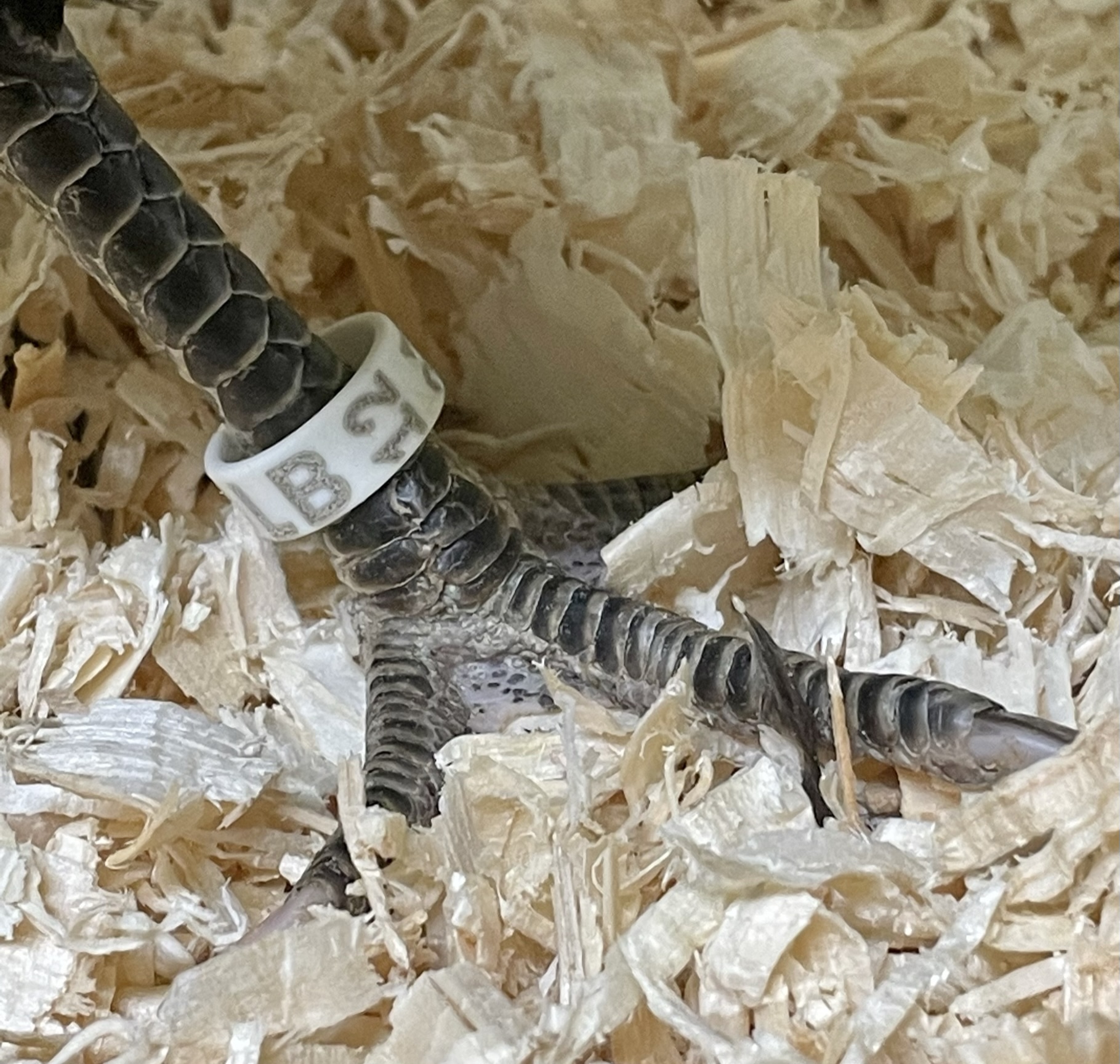Seamless Leg Bands
One of the most ideal marking products that is relatively new to North American markets are plastic seamless leg bands. These products are available through a large number of retailers domestically and really are becoming very highly regarded. The plastic is pre-formed, which ensures that shape and size does not change or fluctuate with varying temperatures. The bands are laser etched with the size and year, and then can be customized with letters, initials, and numbers. Some suppliers will only offer specifically labelled bands, while others offer complete customization.
There are a few drawbacks to using seamless leg bands that need to be considered prior to making the commitment. Probably the largest issue is the sizing. Because there is no ability to expand or contract the band, if the band is too small, it may be a challenge to get it onto the leg, or over the spur. If the band is placed on the bird and the band is too big, or the birds’ leg is too small, it will easily slip off. This needs to be one of the biggest considerations when selecting sizing for your bands, and it may take a couple of seasons to figure out what works best for you and the breeds you are are working with. It is always a good idea to have a few of many different sizes of bands on hand, to ensure you have something larger available in case you wait a bit too long with getting them on!
One of the other challenges with seamless leg bands is that once they are placed, the marks are permanent. This is a benefit for those who value the permanent record it creates and is a great asset for those diligent with record-keeping and tracking, but also limiting as the manufacturer tends to use specific colours of plastics to denote different years. This means that they cannot properly be used year over year, or your birds may not reflect the appropriate age identified on the mark. While this may not be an issue for some, it poses significant issues for others, where that tracking system is important and there is a reliance on the band for flock management.
Another caution related to the use of seamless leg bands is for those breeds that have feathered legs. Be sure to use a larger size on these breeds to ensure there is lots of room for the feathers to properly grow and develop as the birds get older and moult. A band that is too small can be very restrictive and could lead to growth and feather development issues later in the life of the bird.

There are some additional benefits to the use of seamless leg bands to consider. One of these is that their use can prevent and deter thefts if you are a poultry exhibitor where there is potential, whether accidental or intentional, for birds to be removed by someone other than the rightful owner. Use of a permanent mark, with unique identifiers makes it easy for owners to identify their own birds and it can be incredibly helpful at coop out to ensure you are grabbing the right ones when the mayhem is going on around you.
Another additional benefit to consider is the simplicity of application. Because all domestic poultry tend to be biologically structured with three toes pointed forward, you can simply press the three forward toes together and slide the band over the toes, past the pad, and over the hind toe(s). If the shank is not long enough to allow the band to pass smoothly over the hind toe, simply press the hardened end of a feather (the quill end) between the toe and shank to pull the hind toe gently towards the back of the bird to pull it through the band. If a band is the correct size, and the toes and pad are slightly large, you can use Vaseline on the tight spot to smoothly push it on. Do not ever force a band on a leg that is too large, only use a larger band or you can cause significant harm or pain to the bird during the application process. Causing pain of this nature is not acceptable as responsible poultry owners and it is our responsibility to care for our birds in a way that prevents this, which means using a bigger band or marking the bird with a different technique.
In conclusion, banding is an incredibly useful tool in flock management and is used by poultry keepers of flocks of all sizes and levels of management expertise. Selecting the right tool for managing your flock and identifying your birds appropriately will equip you to be successful in breeding for many successive generations, managing your flock to prevent excessive inbreeding and monitoring for the desired traits for your breed. It is important to acknowledge there will be lots of products, options and methods for banding, this article is not an exhaustive list, and decisions should be made on what works best for you and your flock, and in consultation with your flock advisor, veterinarian, or local supplier of these products, who know them best.
Clayton Botkin, P.Ag. B.Sc. (Hons), APA General Licensed Judge #1234
